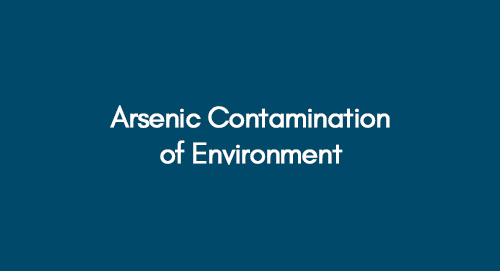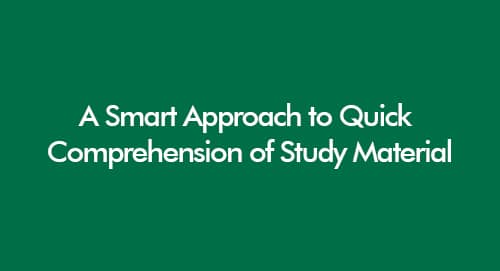
An Insight into Alternative Dispute Resolution (ADR)
December 13, 2022
Rise of Smart Airports: Implications on the African Aviation Industry
December 14, 2022In the silent symphony of nature, the insidious notes of arsenic contamination play a discordant tune, a toxic ballet that infiltrates the environmental stage, staining the earth's canvas with a sinister brushstroke, urging us to compose a harmonious solution to cleanse the melody of our shared habitat. Arsenic contamination of the environment is a global concern with far-reaching implications for human health and ecological stability. This research article provides an in-depth literature review of arsenic contamination, focusing on its sources, distribution, environmental fate, health effects, and mitigation strategies.
Systematic Review on Arsenic in Food Chain
Arsenic contamination is a complex issue influenced by natural geological processes, industrial activities, and anthropogenic factors. Understanding the multifaceted nature of arsenic contamination is essential for effective mitigation and safeguarding both human and environmental well-being.
Introduction
Arsenic is a naturally occurring element found in the Earth's crust. While it has various industrial applications, exposure to arsenic, particularly in its inorganic forms, can lead to severe health problems, including cancer, skin lesions, and cardiovascular diseases.
Arsenic contamination of the environment has gained significant attention due to its adverse effects on human health and the ecosystem.
Learn How NPPF Can Enhance a Sustainable and Healthy Community
This article presents a comprehensive literature review of arsenic contamination, covering its sources, distribution, environmental fate, health impacts, and mitigation strategies.
Sources of Arsenic Contamination
- Natural Sources Arsenic can be released into the environment through natural geological processes. High levels of arsenic can be found in certain geological formations, leading to naturally contaminated groundwater and soil. Volcanic activity, weathering of rocks, and sedimentary processes can all contribute to the release of arsenic into the environment.
- Anthropogenic Sources Human activities play a significant role in arsenic contamination. Industrial processes such as mining, smelting, and manufacturing release arsenic into the air and water. Pesticides and herbicides containing arsenic were used extensively in agriculture in the past, leaving a legacy of contamination in soil and water. Additionally, the disposal of arsenic-containing waste from industries contributes to contamination.
Distribution of Arsenic Contamination
Arsenic contamination is a global issue, with regions like Southeast Asia, South America, and parts of the United States experiencing particularly high levels of contamination. The distribution of arsenic in the environment varies based on geological and anthropogenic factors, with groundwater being a primary pathway of exposure for many populations.
Environmental Fate of Arsenic
Arsenic undergoes various transformations in the environment, changing its chemical form and mobility. Inorganic arsenic can be converted into organic forms by microorganisms, making it more bioavailable. Arsenic can also adsorb to soil particles, reducing its mobility but increasing its persistence in the environment. Understanding these transformations is crucial for assessing the risk of exposure.
Health Effects of Arsenic Exposure
- Acute Effects Short-term exposure to high levels of arsenic can lead to acute poisoning, resulting in symptoms such as vomiting, diarrhoea, and even death. Such incidents have occurred due to the consumption of contaminated water or food.
- Chronic Effects Chronic exposure to low levels of arsenic is associated with a range of health problems. These include skin lesions, respiratory issues, cardiovascular diseases, diabetes, and an increased risk of cancer, particularly bladder, lung, and skin cancer. Vulnerable populations, such as children and pregnant women, are at higher risk.
Mitigation Strategies
- There are various effective water treatment methods, such as coagulation, filtration, and adsorption, that can help remove arsenic from drinking water sources. Developing affordable and accessible treatment technologies is essential for communities facing arsenic contamination.
- Agricultural Practices Promoting sustainable agricultural practices, including reducing the use of arsenic-containing pesticides and adopting organic farming, can minimize arsenic contamination in food crops and soil.
- Remediation Technologies In areas with extensive arsenic contamination, soil remediation technologies like phytoremediation, bioremediation, and chemical stabilization can be applied to reduce arsenic concentrations in soil and groundwater.
- Awareness and Education Raising awareness about the dangers of arsenic contamination and providing education on safe drinking water and hygiene practices is crucial for reducing exposure in affected communities.
Conclusion
Arsenic contamination of the environment is a multifaceted problem with global implications for human health and ecological stability. Understanding the sources, distribution, environmental fate, health effects, and mitigation strategies related to arsenic contamination is essential for addressing this pressing issue. Effective mitigation requires a multidisciplinary approach involving governments, communities, and researchers to protect both human and environmental well-being. Further research is needed to develop innovative and sustainable solutions for mitigating arsenic contamination in diverse settings.
Get 3+ Free Dissertation Topics within 24 hours?



























